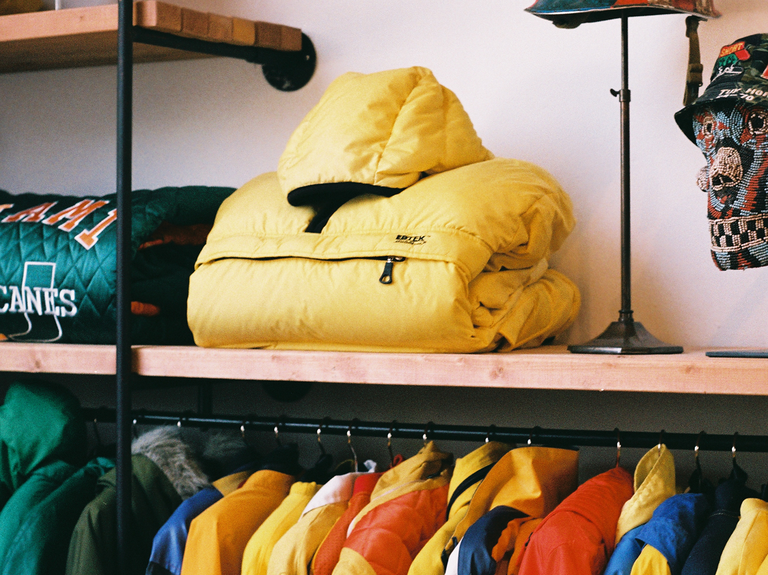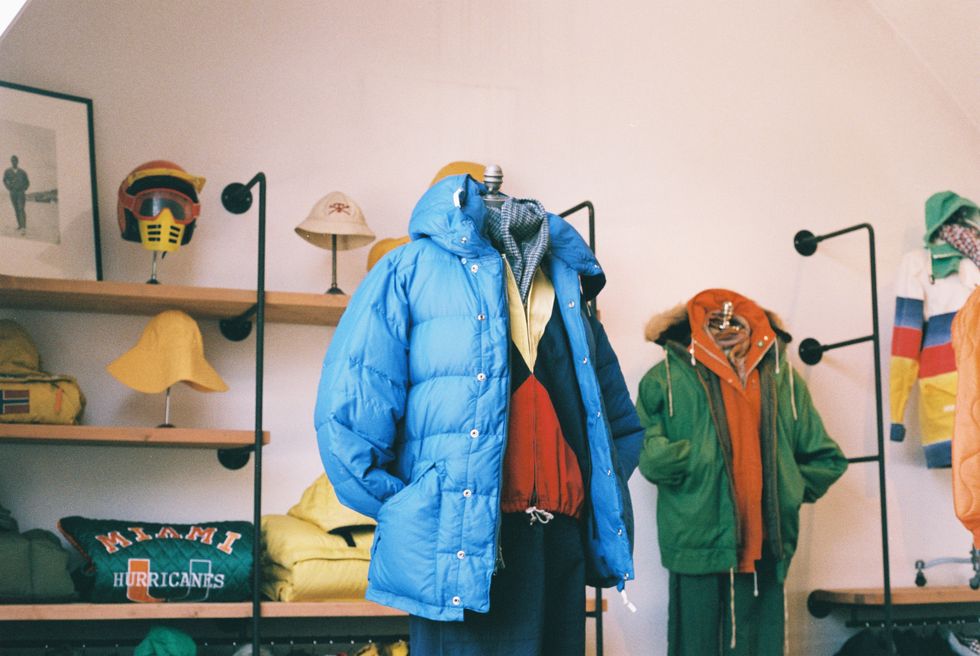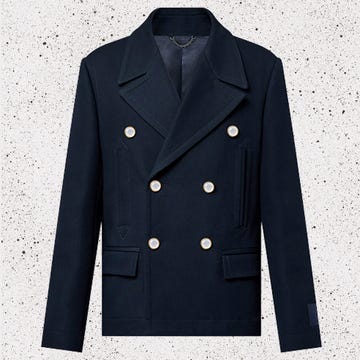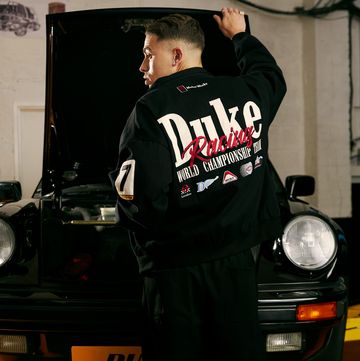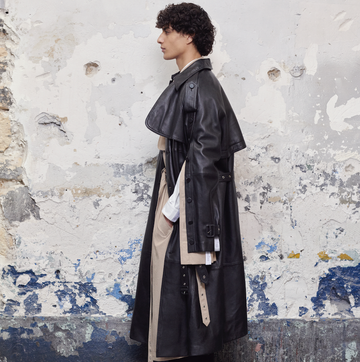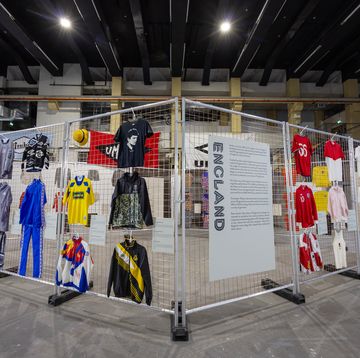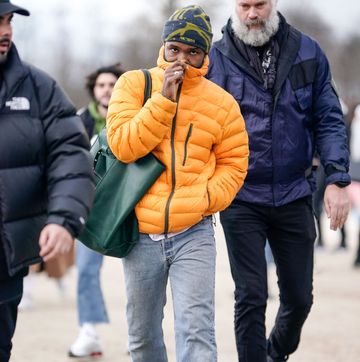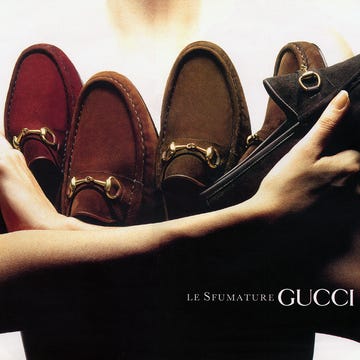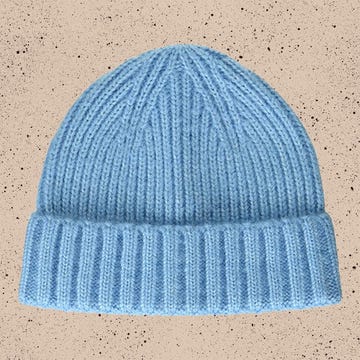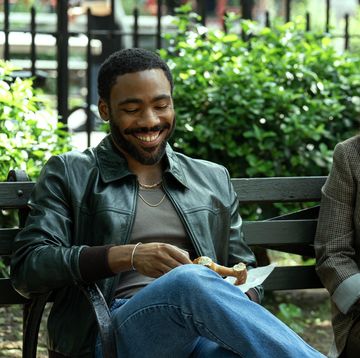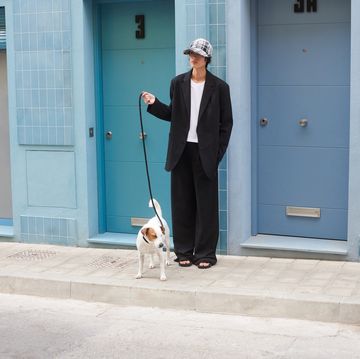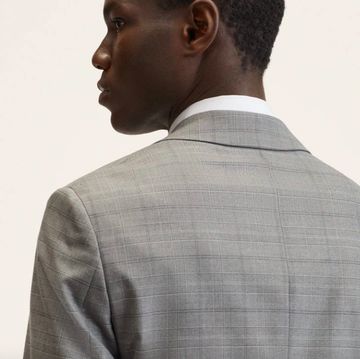A billionaire walks into a vintage clothing showroom. Usually this space, tucked down an unassuming avenue in Paris’ chic 16th arrondissement, is off limits to the general public, but being a part of the global 0.001 per cent opens doors that would otherwise remain closed.
“He was a friend of a friend so I agreed,” says Gauthier Borsarello, a former classical musician and the owner of the showroom. A smooth-headed and smoother-mannered 30-year-old Parisian, Borsarello’s name alone feels tailor-made for a collector and purveyor of rare and exquisite vintage clothing. Jackets from WWII, Fifties collegiate sweatshirts and Levi’s 501s line the walls and shelves. There’s an original Abercrombie & Fitch hunting jacket the brand desperately wants to buy for its archive, but Borsarello can’t — won’t — part with it.
“He [the aformentioned billionaire] showed me his credit card,” Borsarello adds, “and said, ‘With this I can buy anything in the world, but what I’m looking for is an experience, something that not just anyone can get’. Guys like him are looking for something that is really exclusive. That’s why I think people are interested in vintage. This kind of clientele is growing and growing.”
Borsarello opened his showroom in 2016 and, unless you’re a billionaire yourself, access is reserved strictly for designers and fashion insiders. His clothes are bought or rented by brands and used as inspiration and reference for collections that will hit the shelves two or three years from now. “Designers come to see something they’ve never seen before: a patch, a button, a piece of fabric,” he says.
Part of a young, dynamic and multi-hyphenated group of second-hand aficionados who combine new-school social media fluency with old-fashioned, on-the-ground scouring ability, Borsarello also owns Le Vif — a vintage store which is open to the general public — across the road from his eponymous showroom. He is also the creative director of retro-inspired label Holiday Boileau and editor-in-chief of L’Etiquette magazine. He posts regular updates of his best finds and vintage “inspo” to his 32,200 Instagram followers. “Instagram made my business really,” he says. Via WhatsApp he connects with a global network of “pickers”, people who trawl through warehouses of vintage clothing, on the hunt for the kind of rare and interesting pieces that clients like Borsarello will part with big money to acquire.
“In the past, people would go to their tailor and have two suits made for the year,” Borsarello says. “Ten shirts, a coat, a couple of pairs of shoes and that was it. I think people are coming back to this way of thinking and consuming, whether they’re buying new or vintage. I think, to be honest, people are tired of all the shit out there.”
The statistics support this claim. According to a joint report by fashion platform ThredUp and analytics firm GlobalData, the resale market has grown 21 times faster than apparel retail over the last three years, and the global secondhand clothing industry is set to be 50 per cent larger than the fast fashion sector within 10 years. By 2028, it’s predicted to be a £50bn entity. On average, consumers own 28 fewer items than they did two years ago. H&M is rushing to join in; the Swedish company recently piloted a “vintage” programme that will allow the re-sale of secondhand garments on its websites.
Farfetch, the £4.6bn-valued e-commerce platform, already has a pre-owned section where it works with vintage boutiques around the world. “I think our customers recognise that these are pieces that don’t really exist anymore, and that they can’t find anywhere else,” says the website’s deputy editor, Rob Nowill. “We’ve seen an incredible reaction to it.”
“Secondhand shopping has recently become quite popular among millennials,” adds Morgane Le Caer, a reporter at Lyst, a fashion search engine that saw a 329 per cent increase in traffic to luxury re-sale products last year. “The thrill of finding something special hidden among hundreds of other pieces is inspiring people to give vintage clothes a second chance.”
Not just clothes: StockX, the trainers and streetwear re-sale marketplace launched in 2016, was in an April funding round which would value it in excess of $1bn (it claims more than $2m a day in gross sales). Cool-hunting men and women are equally likely to shop online at Vestiaire Collective, the Paris-based “authenticated pre-owned luxury fashion” retailer, as they are at Net-a-Porter or Matches Fashion.
Those who still associate vintage clothing with pokey thrift stores, empty charity shops and church hall jumble sales might do well to check out the website of Grailed, a New York-based start-up that launched in 2015 and now boasts 3.2m registered users and a team of 50. It is, according to brand director Lawrence Schlossman, a “men’s fashion community marketplace”. Basically, whatever your personal “grail” (streetwear parlance for a dream item of clothing) chances are someone on Grailed is selling it… for a price. Last year, news broke of a Raf Simons “Riot” camo bomber jacket from the Belgian designer’s autumn/winter 2001 collection selling for $47,000 (£37,000), a site record.
With 440,000 followers on Instagram, Grailed also has an influence on what is and isn’t hot in the online world of men’s streetwear and fashion. Its memes and original content have contributed to the proliferation of recent, wide-spreading trends and talking points such as Patagonia fleeces, Blundstone work boots, teens’ obsession with archival Helmut Lang, tie-dye and a rising US interest in Stone Island.
“Not to fire any shots,” says Schlossman, “but think of eBay. Yes, I can buy a vintage T-shirt and a new pair of Balenciaga sneakers that have sold out, but I can also buy a washing machine — eBay wants to be, and is, everything to everyone regardless of what you’re looking for. We take pride in being laser-
specific to men’s clothing.
“When we launched, there was a pervasive idea that ‘vintage’ or ‘used’ had negative connotations,” says Schlossman. “The idea that someone is trying to sell an old, shitty thing they don’t care about or have any need for. I think there’s a whole generation realising authenticity is important, and I think they relish the opportunity to tell people, ‘I’ve been looking for this thing for a year and I found it!’ That’s an important signifier that shows you really care and have great taste, rather than walking into a generic fast fashion outlet and buying their version of whatever a trendy pant is.”
Where once “box fresh” was a vital component of a purchase, today having an item with signs of wear is a key element of cool. Brands like Bode, started by New York designer Emily Bode, are testament to that. She takes dead-stock cloth, old and rare fabrics, and reimagines them as beautiful work jackets or hand-embroidered trousers. Something that began life as a quilt or a curtain is transformed into a one-off item. Brand new is retro: retro is brand new. Kids that are two generations too young to have heard the band play live in its heyday are now obsessed with The Grateful Dead’s merchandise: the wild tie-dyed T-shirts are mysterious and appealing. Some luxury trainers, such as those by Gucci, come “pre-worn” for your aesthetic convenience.
On a heavy spring day in Holland Park, I find the hidden entrance to Cassie Mercantile. A gate leads into a garden with the kind of greenery that is rare — and comes at a premium — in London. Leaves hang low and birds sing freely. If this was an episode of Grand Designs, Kevin McCloud might describe it as an “urban sanctuary”.
Gauthier Borsarello told me about Graham Cassie, speaking his name in hushed tones when we talked on the phone. “He’s someone I really admire. I would like to be like him,” he said. “He has something like 600 Instagram followers [it’s actually 1,176], but he’s a legend in the industry and his showroom is amazing.”
Cassie, 59, wears strong black glasses and his beanie like a Brooklyn barista, his Scottish accent worn down by decades in London. He’s been in vintage his whole life, having owned a shop, Eat Your Heart Out, on the King’s Road in the Eighties. “I don’t want to deal with the general public anymore,” he says with a chuckle. Cassie Mercantile opened here 16 years ago. He was, he claims, the first to open a vintage showroom (designers only) in Europe. “If I showed you my client list, the brands I work with, you’d say, ‘Woah!’” he says without pretence. They are indeed woah.
In one photo on his Instagram feed, Cassie poses next to David Beckham, in another with Kanye West. He’s not sure how West found him. “People seem to hear about me,” he says. “He was very nice, though, very thorough. He came in with just one other person and is the first and only client to go through every single item of clothing we have. You can see why he’s so successful, the attention to detail was obvious.”
What immediately stands out is how modern everything feels despite, in many cases, some items being more than a century old. Bucket hats, printed open-collar shirts, bright and battered Nike running shoes, and stacks of Victorian rugby jerseys, Thirties T-shirts and slouchy Vivienne Westwood knitwear from her punk era. The new wave of colourful sportswear and prep could well have been born from this little showroom. Undoubtedly some was.
“I like to think we’re a fashion forecasting company more than a vintage clothes company,” Cassie says. “I’ve always loved the mix of fashion and vintage with a modern outlook. Often there’s this anorak mentality in the vintage business, people love to be able to quote what number a military jacket is or the year it was made. I’ll always remember Ralph Lauren saying, ‘I don’t care what number the jacket is — is it a cool jacket?’ That’s always been my philosophy.”
Like this article? Sign up to our newsletter to get more delivered straight to your inbox
